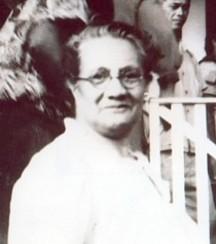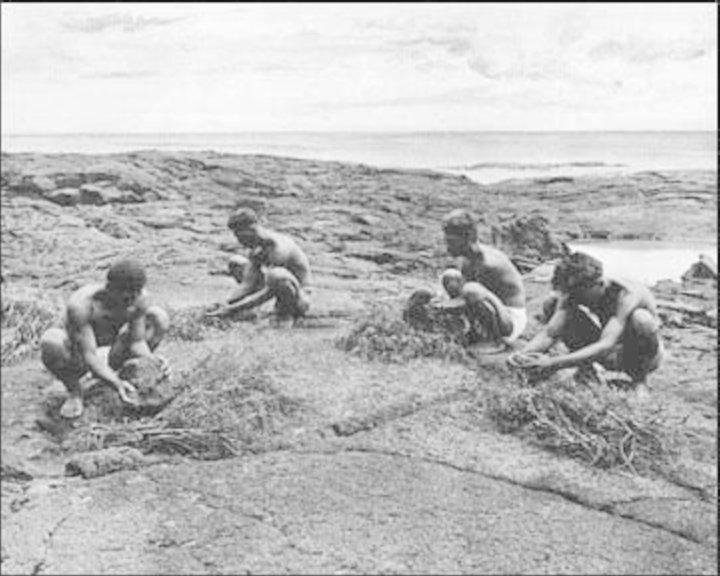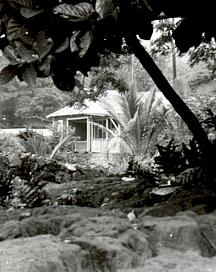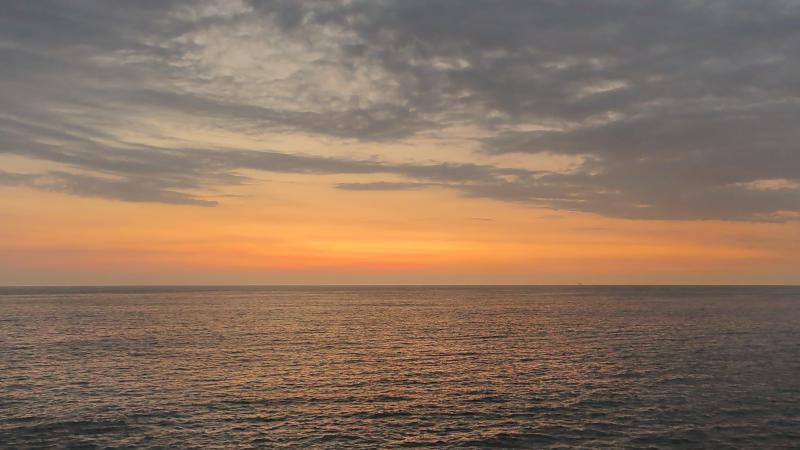Digital Collections
Celebrating the breadth and depth of Hawaiian knowledge. Amplifying Pacific voices of resiliency and hope. Recording the wisdom of past and present to help shape our future.
Kīhei de Silva
Haku mele: Lydia Nawahine Kekuewa.
Source: Kawai Cockett, who learned it from Vickie Ii Rodrigues and Pauline Kekahuna.
Discography: Kawai Cockett, Beautiful Kaua‘i, Hula Records HS541. Ke ‘Alohi, Ke ‘Alohi, Ho‘olokahi HP201.
Text below: As sung by Kawai Cockett.
Translation: Kīhei de Silva.
Pā mai ana ka makani
Hele uluulu a‘o Kona
Ku‘u ‘āina hānau
I ka poli a‘o ka makua
Hāli‘ali‘a mai ana
Ka ‘ano‘i o ka ‘āina
Ku‘u home ku‘u lā ‘ōpio
He nani maoli nō a‘o Kona
I ke kau mai a‘o ka ‘ōpua
Ka malino o ke kai
Ke kai mā‘oki‘oki
Hāli‘ali‘a mai ana
Ka ‘ano‘i o ka ‘āina
Ku‘u home ku‘u lā ‘ōpio.
The wind blows
The inspiration-bringing wind of Kona
Over the land of my birth
A place cherished in the bosom of my parents
It stirs fond memories
Of the desired-one of the land
Of my home and my youth.
Kona is truly beautiful
With cloud-banks resting on the horizon
The serenity of the sea
The streaked sea of Kona
Stirs fond memories
Of the desired-one of the land
Of my home and my youth.
In deference to her position as matriarch of the Kekuewa family in the first half of the 20th century, Lydia Nawahine Kekuewa was called "Tūtū Lady" by my mother and Mom’s three sisters. Lydia was, in fact, their grand aunt—the wife of Obed Kekuewa (b. 1862), their maternal grandfather’s brother. Lydia’s family came from Maui (her brother Robert Nawahine was a leader of central Maui’s churches, the first licentiate of Waihe‘e Church, and the composer of the well-known hymns "‘Ekolu Mea Nui" and "Ke Hea Nei ‘O Iesu Lā ), but her song clearly states that she was a native of Kona, Hawaiʻi. She was, as well, a much-feared and respected school and hula teacher (Roselle Bailey’s mother and Bettie Yates Hughes were among her haumāna hula), and she and Obed, the Captain of Police for Kailua-Kona, made their home on Kekuewa family land in Hōnaunau-Mauka. Their rebuilt house, which sits on a knoll above the highway that leads past the Hōnaunau Post Office to Pu‘uhonua o Hōnaunau, is now the residence of Aunty Lei (Matilda Ku‘ulei Kekuewa) Hart, my mother’s oldest sister.* Tūtū Lady apparently shared her brother Robert’s talent for songwriting, and a handful of her mele are still sung today. These songs include: "Pā mai ana ka Makani (Kona)," "Hu‘i Ē," "Hōnaunau," "Nā Moku Kaulana," and "Hōnaunau Pāka" (this last is also attributed to Rose Peters). Family tradition has it that several of her other compositions were "absorbed" by Johnny Noble who was more interested than she in publication and copyrights.
Kawai Cockett learned "Kona" from Vickie Ii Rodrigues and Pauline Kekahuna in the days when they sang and danced all over the islands. Although the song was once an old favorite, Kawai was the first—and for a long time the only—artist to record it. It has since been released by Ke ‘Alohi as "Pā mai ana ka Makani"; their dramatic, wind-driven, kālā‘au-tapping arrangement gives a somewhat agitated cast to the nostalgic warmth of Kawai’s original. The difference in the two versions may well stem from the ambiguity of uluulu in the line "Ka makani hele uluulu a‘o Kona."** The word can be translated in a number of ways: as "growing and increasing," as "inspiring," or as "agitated and violent." Since the setting of the song is a fondly remembered (hāli‘ali‘a) homeland characterized by security (ka poli a‘o ka makua), beauty (nani maoli nō), serenity (ka malino o ke kai), and love (ka ‘ano‘i), I am of the opinion that the last of the uluulu translations above is the least appropriate and that the second—"inspiring"—is the most accurate. In Tūtū Lady’s composition, the Kona wind (perhaps the ‘Eka) touches her and with that touch comes a happy rush of fond, inspiring memories. It is perhaps the relentless ‘Āpa‘apa‘a wind of Kohala that best fits the "agitated" connotations of uluulu (the mele hula "A Kona Hema ‘O Kalani," in fact, describes the ‘Āpa‘apa‘a as "makani hele uluulu – the wind that mounts to gales"), but the uluulu wind of "Kona" is a bird of a different feather: it is cause for joy, not endurance.
A second, considerably less significant difference in the two recordings of "Kona" is more the result of oral transmission than of interpretation. In the absence of a definitive Lydia Kekuewa text for the song, people have learned it by listening to others sing it. Sometimes they hear differently. Kawai sings the penultimate line of each verse as "Ka ‘ano‘i o ka ‘āina" ("The desired-one of the land"). Ke ‘Alohi’s liner notes, on the other hand, give this line as "Ka ‘ōnohi o ka ‘aina" ("The center of this land"). Both words can be interpreted as referring to the same much-loved (‘ano‘i) essence (‘ōnohi) of Tūtū Lady’s Kona; both immediately call Obed Kekuewa to mind. I am enough of a romantic to hope that he is at the center of her heart, homeland, and song—but I also sense that his specific identity has merged with cloud, land, and sea to become part of a larger, interwoven complex of cherished memories. The wind blows and stirs memories of her loved-one, home, and youth. The beauty of Kona’s clouds and sea stirs memories of her loved-one, home, and youth.
Obed predeceased Lydia by a number of years; although I don’t know whether she wrote "Kona" before or after his death, the song strikes me as a retrospective piece composed at a time when the years had granted her a full measure of wisdom and peace. Tūtū Lady’s use of three Kona epithets in the last three lines of her song—Kona kai ‘ōpua, Kona kai malino, and Kona kai mā‘oki‘oki—also indicates a mature, big-picture perspective earned by years of training in the aesthetics of traditional composition: she does not attempt to create out of a vacuum or to write what’s never been written. Instead, she uses as the foundation of her mele the time-honored sayings of the place she loves. One does not usually write about youth and fond memories when one is still of an age to make those memories; nor does one usually write in so traditional a manner when one has youth's more narrow sense of identity.
The essay above was written by Kīhei de Silva and published in his book He Aloha Moku o Keawe: A Collection of Songs for Hawai‘i, Island of Keawe, Honolulu, 1997, pps. 29–30. It is offered here, in slightly revised and updated form, with his express consent. He retains all rights to this essay; no part of it may be used or reproduced without his written permission.
*Aunty Lei Hart has since passed away.
**Kimo Alama Keaulana has indicated that the second line of the song is also sung "He ‘Eka a‘o Kona." He believes that this, in fact, is the correct rendering of the line—as shared by Aunty Vicky Ii: "This was double-checked [in] a conversation with Aunty Vicky’s daughter Nina. I don’t know where Kawai gets ‘Hele uluulu a‘o Kona" from." (Personal Communication, May 24, 1999.)

photo courtesy of: Kekuewa Family Collection
Lydia Nawahine Kekuewa at her home in Hōnaunau, Kona, in 1941. Tūtū Lydia composed four still-popular mele: “Pā mai ana ka Makani,” “Nā Moku Kaulana,” “Hu‘i Ē,” and “Eia Hōnaunau.” This talent for song-writing must have run in the Nawahine family; her brother Robert composed “‘Ekolu Mea Nui,” one of our most beloved Hawaiian language hymns.

photo courtesy of: Kekuewa Family Collection
Henry Kalā Kekuewa (third from left) and three of his sons are pictured above on the pāhoehoe flats ma kai of Hale o Keawe, Hōnaunau, circa 1915. The men are preparing a fish-narcotic from the bark, roots, and leaves of the ‘auhuhu shrub. Henry’s brother Obed married Lydia Nawahine, a school teacher, kumu hula, and composer. ‘A‘ohe a lāua pua; eia na‘e, ua lilo koke ‘o Lydia i Tūtū no mākou, nā mo‘opuna Kekuewa āpau.

photo courtesy of: Kīhei de Silva
The Henry Kalā Kekuewa family home at Hōnaunau as seen from the Pu‘uhonua o Hōnaunau parking lot. The home was demolished and another built in its place in the summer of 2005. Tūtū Lydia lived on the hillside “up mauka.”

photo credit: Robert Linsdell, Wikimedia Commons
Ka malino o ke kai – The serenity of the sea in Kona.